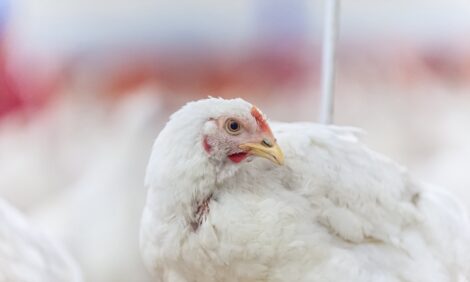



What to know about avian influenza in dairy cows and the risk to humans
Only one US worker has tested positive for H5N1 so farUS officials have strengthened measures to contain the further spread of the first known outbreak of H5N1 or bird flu in dairy cows, which has now spread to 33 herds in eight states and bled over into the country's milk supply, reported Reuters.
So far, only one person - a Texas farm worker - has tested positive for H5N1, and while health officials and scientists say the risk to people remains low, many questions remain.
Why is H5N1 or bird flu a concern?
The spread of bird flu among dairy cattle reflects an expansion of the range of mammals that can be sickened by the virus that typically infects birds.
Scientists are on alert for changes in H5N1 that could signal the virus is adapting to spread easily among humans. The virus has caused serious or fatal infections among people in close contact with wild birds or poultry. It has long been on the list of viruses with pandemic potential, and any expansion to a new mammal species is concerning.
The infections in cattle are from the same subtype of avian influenza that has been infecting wild birds and poultry flocks globally for more than two years, also killing several mammal species that likely contracted the virus from consuming sick or dead birds.
How widespread is the avian influenza outbreak in cattle?
The full extent remains unknown, but several recent developments suggest it may be in more herds than documented.
On April 23, the US Food and Drug Administration said it has detected particles of H5N1 in the milk supply. Tests suggest they are remnants of virus killed during the pasteurization process, and that the milk is safe. Early testing has not detected any live virus in milk samples, and U.S. health officials believe people cannot get sick from drinking pasteurized milk and warn not to drink unpasteurized milk.
Officials have learned the virus can be present in cows that show no signs of infection, and milk from those cows does not show signs of infection such as being thicker and yellow.
To contain the outbreak, the US government is requiring dairy cattle moving between states to be tested for avian influenza.
When did this avian influenza outbreak start?
US officials had thought the outbreak was recent, but new information suggests it may have started late last year.
After the US Department of Agriculture released some raw genetic data onto a public database on April 21, a team of evolutionary biologists led by Michael Worobey of the University of Arizona pieced together the viral genetic codes.
The team mapped the outbreak by tracking changes in the virus as it spread among herds. Based on their analysis, Worobey said in an April 24 interview that the outbreak in dairy cattle occurred through a single transmission event from a bird to a cow in late 2023, likely in December.
How is H5N1 spreading?
It is still unclear how the virus is spreading, but there is evidence of wild bird-to-cow, cow-to-cow, cow-to-poultry, and one case of cow-to-human transmission. There is no evidence of human-to-human transmission.
Because of the heavy viral load in milk and mammary glands, scientists suspect the virus is being spread to animals during the milking process, either through contact with infected equipment or with virus that becomes aerosolized during cleaning procedures.
Whether the virus can spread through respiratory droplets that infect the airway, as flu viruses typically spread in humans, remains unclear.
Is there an avian influenza vaccine for humans?
The US has a stockpile of avian influenza vaccines matched with the strain currently circulating, as well as antivirals that could be used to treat human infections. For a major epidemic or a pandemic, the US would have to scale up considerably.
Flu vaccine suppliers Sanofi, GlaxoSmithKline and CSL Seqirus have said they are monitoring avian flu and stand ready.










